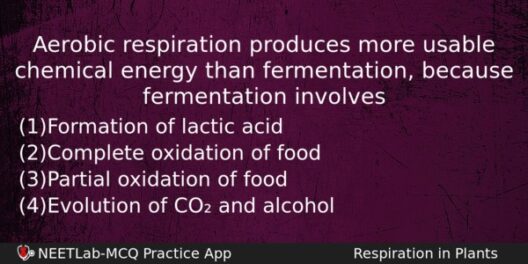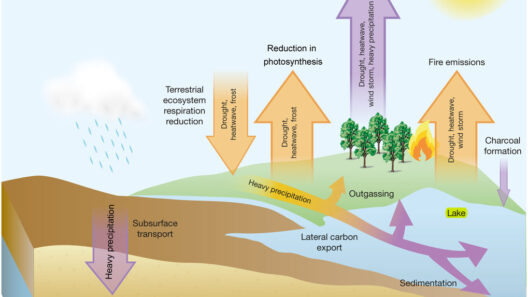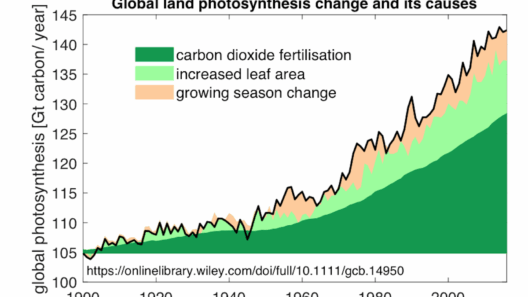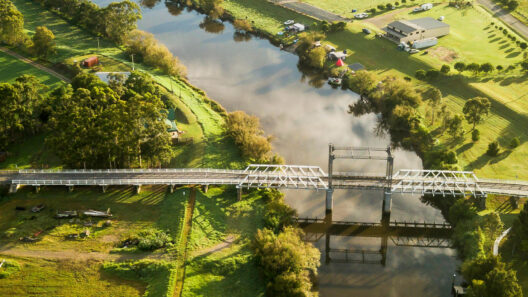As climate change accelerates, a profound transformation is unfolding within ecosystems across the globe. This phenomenon, often dubbed “The Animal Exodus,” encapsulates the dramatic displacement of wildlife due to shifting climatic conditions. As temperatures rise, habitats are altered, and resources become scarce, various species find themselves in a race against time to adapt or relocate. This complex interplay of environmental changes is not merely an ecological concern; it signals a cascade of consequences that could irreversibly alter the natural world.
Climate change is a multifaceted issue, encompassing shifts in temperature, precipitation patterns, and the frequency of extreme weather events. These alterations are not just statistical anomalies; they manifest in specific, tangible ways that directly affect wildlife. For instance, rising temperatures can lead to the melting of polar ice caps, which threatens species like the polar bear. As their habitats diminish, these magnificent creatures are forced to migrate in search of viable landscapes and prey.
Migration is not a novel concept in the animal kingdom. Many species have engaged in seasonal movements for millennia—following food sources or breeding grounds. However, the current pace of climate change is unprecedented. Polar bears, for instance, are not just moving longer distances; they are finding new habitats that may not support their survival. Without stable environments, the survival of not just individual species but entire ecosystems hangs in the balance.
Moreover, ecological niches are rapidly shifting. As temperatures rise, some species flourish while others struggle to adapt. For example, warmer climates may be conducive to the proliferation of certain plant species that are less palatable to herbivores. Thus, the food chain becomes disrupted. Grazing animals are left without adequate resources, thereby affecting the entire trophic level. Consequently, species that depend on these grazers for sustenance soon find themselves facing a grim fate.
In tropical regions, the phenomenon is equally alarming. The Amazon rainforest, a sanctuary for millions of species, faces existential threats due to deforestation and climate variability. As rainfall patterns change, many animal species may find their existing habitats untenable. For instance, amphibians, which are sensitive indicators of environmental health, are among the first to suffer. With the moisture they need to thrive rapidly diminishing, they are forced to migrate or face extinction.
The challenge is compounded by human activity, which exacerbates natural climate fluctuations. Urban expansion, industrial pollution, and land use changes further fragment habitats, creating barriers for wildlife migration. Animals that might otherwise escape the encroaching impacts of climate change find themselves trapped by roads, cities, and agricultural developments. The result is a colossal fragmentation of ecosystems that stifles biodiversity and exacerbates the pressures on displaced wildlife.
In an unexpected turn, some species exhibit remarkable resilience in the face of these daunting challenges. Certain birds, for instance, have adjusted their migratory patterns in response to earlier spring warming, allowing them to exploit new food resources. This adaptability, however, is not universal. Many species lack the evolutionary capacity to keep pace with the rapid changes, leading to a stark dichotomy between thriving species and those on the brink of extinction.
Among the most disconcerting aspects of the animal exodus is the concept of climate refugia—areas that remain relatively stable amid changing climatic conditions. These pockets of habitat provide critical sanctuary for species struggling against environmental change. Yet, these refugia are finite and increasingly under strain from invasive species and human encroachment. Protecting these zones is imperative to ensure the survival of vulnerable species.
The implications of the animal exodus extend beyond individual species. As biodiversity diminishes, ecosystems become less resilient, making them more susceptible to disease and environmental shocks. The loss of keystone species, which play crucial roles in maintaining the structure of an ecosystem, can have cascading effects. For example, the decline of bees has profound ramifications for pollination, affecting food crops and wild plants alike. Consequently, an animal exodus is not solely a wildlife issue; it tangentially affects human food security, economies, and overall ecological health.
Conservation efforts must evolve to tackle these multifarious challenges head-on. Proactive measures, such as creating wildlife corridors, establishing protected areas, and implementing sustainable land-use practices, can mitigate the impacts of habitat fragmentation and displacement. Public engagement and awareness are vital components in fostering broader societal support for these initiatives. By recognizing the intrinsic value of biodiversity, communities are more likely to advocate for policies that prioritize wildlife protection amidst climate turmoil.
In inequitable circumstances, the exodus experienced by wildlife mirrors the plight of human populations displaced by climate change. Just as animals seek new habitats to survive, communities around the world are grappling with devastating hurricanes, droughts, and rising sea levels, leaving behind their homes. Empathy for displaced humans may have the potential to foster a greater understanding of the urgency behind protecting wildlife that is also fleeing their altered habitats.
Ultimately, “The Animal Exodus” serves as a clarion call—urging society to confront the realities of climate change. Each displacement tells a story of adaptation, survival, and resilience. Society must recognize these narratives and galvanize collective action to mitigate the ongoing impacts of climate change. By prioritizing ecological preservation and public awareness, we can together ensure that both wildlife and humanity navigate the turbulent waters of environmental change.







